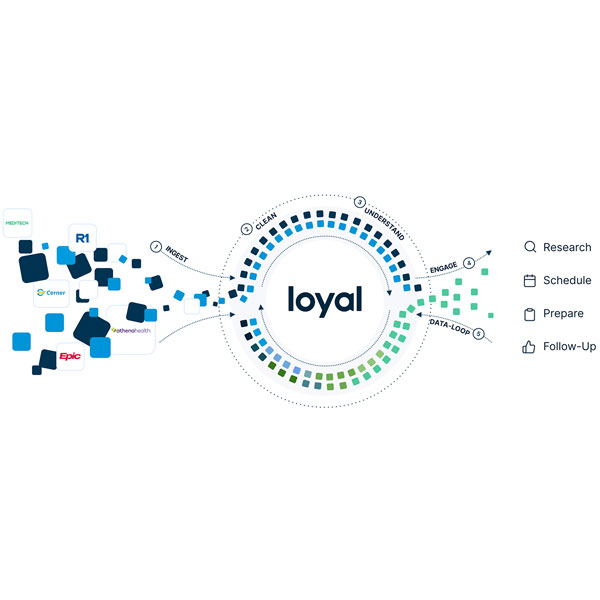By Rachelle Montano, MS, RD, MBA, VP of Clinical Strategy at Loyal
Having a structured clinical taxonomy system in place is key to ensuring healthcare consumers are successfully finding care in the way they’re actually seeking it. The patient experience is enhanced when patients are able to find the right doctor and the right location for their individual health needs.
By their nature, taxonomies and their associations are dynamic, and so is the way people conduct digital searches. This article will explore a few ways for health leaders to establish a strong governance strategy for their consumer and marketing focused taxonomy, ensuring consistent, quality care.
Get your initial taxonomy right (or mostly right)
Sometimes knowing where to start is the biggest challenge. When it comes to consumer and marketing-focused clinical taxonomies, try not to get stuck in analysis-paralysis, and always keep the 80/20 rule in mind. If you’re beginning by building your own taxonomy, review your analytics and start with the most-searched consumer terms. Review your serviceline priorities and ensure the conditions and treatments that are of strategic priority and importance to your health system are included, then expand from there – listen to your doctors, consumers, and friends.
Potential condition and treatment terms for your taxonomy list are everywhere. Many digital health vendors will be able to provide a pre-curated taxonomy with their solution. Oftentimes these are proprietary to the vendor, and meet the needs of their specific solutions. Running into situations with multiple taxonomies to support can be challenging, so when reviewing these vendors, be sure the taxonomy is flexible enough to accommodate your market and organizational needs.
Develop a periodic update process
Remember, taxonomies are never “done,” and will always be a work in progress. New conditions are named, new machines are purchased for new treatments, and new physicians come into your health system. Implementing a taxonomy review, schedule, and update process ensures that everything stays on track and up-to-date, and that you’re supporting your consumers and patients in finding the best care for their needs. To stay current, clinical taxonomy updates should ideally be scheduled monthly, but no less often than quarterly. Find a review-and-update cadence that’s appropriate for your organization and develop a process to ensure you stick to it.
Create style guide rules
Do you include “cancer” or “oncology” in your taxonomy standards? “Pediatric” or “Children’s”? “Wrist and elbow” or “upper extremities”? Creating a consistent taxon language is imperative for maintaining a clean taxonomy. Cementing guidelines from the beginning will ensure consistency as the taxonomy continues to evolve. In addition, developing a synonym strategy supports a clean taxonomy structure and eliminates confusion, decreasing the risk of duplication as your taxonomy evolves.
Establish a taxonomy steering committee
As your taxonomy grows and integrates with additional third party applications, having a taxonomy steering committee in place is invaluable. The committee can help review new taxonomy requests or updates, provide broad, multi-disciplinary agreement, and ensure physicians and service lines are appropriately represented as treating specific conditions or performing procedures.
They can confirm the right equipment and medical staff is in place and approved to perform tests or procedures at particular locations, and help resolve conflicts or close gaps in care coverage. The committee can also help to identify new integration opportunities, extending the reach of the taxonomy. All of this will have a positive impact on consumer and patient experiences for your organization.
Hire a taxonomy manager to oversee the function on an ongoing basis
For a strong taxonomy and data strategy, health systems need to prioritize the taxonomy function. In response to this need, some leading health systems have created a full-time position for a “Manager of Taxonomy” (or another equivalent title). This role oversees the taxonomies that exist, their integrations, and works with the steering committee to ensure that terms are updated frequently and accurately.
When health systems have an internal taxonomy manager, the workflow of updating taxonomy terms and ensuring integration and compliance becomes a more streamlined process. They will become the go-to person for handling requests, cross-checking terms with industry standards and working with providers to ensure that all terms correspond with accurate services; having one person in charge of this function helps standardize the process for making future changes, so taxonomy stays current. In turn, both patients and doctors know their requests and input are seen and implemented consistently, fostering greater trust between health systems and consumers.
Patients need to be able to reach the right care providers for their individual health needs, and providers need their information accurately represented to attract suitable patients and optimize their practice. Successfully matching consumers and patients with the right providers and healthcare services requires health systems to have up-to-date and organized taxonomies, streamlining the digital search for care and leading to a seamless, accurate appointment booking experience. As taxonomy management grows in importance, health systems need to dedicate resources and implement governance strategies to ensure they’re creating the best consumer experience possible.
About Rachelle Montano
Rachelle Montano has over two decades of clinical experience working with hospital and health systems and is passionate about helping patients reach the right providers. Rachelle is an expert on how clinical taxonomy impacts healthcare technology and on creating established guidelines to help health systems improve the patient experience. She is currently the VP of Clinical Strategy at Loyal, where she oversees strategy and development of the taxonomy for the Loyal AI-based chatbot, and runs Loyal’s Clinical Review Board.



